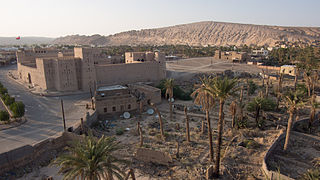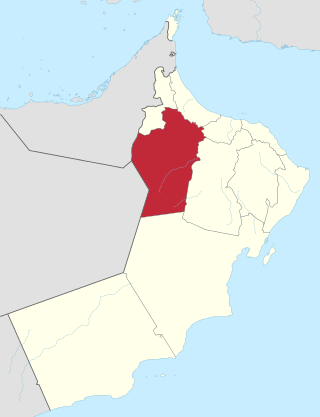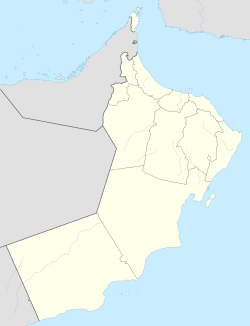
Oman is a site of pre-historic human habitation, stretching back over 100,000 years. The region was impacted by powerful invaders, including other Arab tribes, Portugal and Britain. Oman, at its height, held holdings that ranged from the Persian Gulf all the way south to the island of Madagascar, some notable holdings include; the island of Zanzibar, the city of Mogadishu and the city of Gwadar.

Muscat is the capital and most populated city in Oman. It is the seat of the Governorate of Muscat. According to the National Centre for Statistics and Information (NCSI), the total population of Muscat Governorate was 1.72 million as of September 2022. The metropolitan area spans approximately 3,500 km2 (1,400 sq mi) and includes six provinces called wilayats, making it the largest city in the Arabian Peninsula by area. Known since the early 1st century AD as an important trading port between the west and the east, Muscat was ruled by various indigenous tribes as well as foreign powers such as the Persians, the Portuguese Empire and the Ottoman Empire at various points in its history. A regional military power in the 18th century, Muscat's influence extended as far as East Africa and Zanzibar. As an important port-town in the Gulf of Oman, Muscat attracted foreign traders and settlers such as the Persians, Balochs and Sindhis. Since the accession of Qaboos bin Said as Sultan of Oman in 1970, Muscat has experienced rapid infrastructural development that has led to the growth of a vibrant economy and a multi-ethnic society. Muscat is termed as a Beta - Global City by the Globalization and World Cities Research Network.

Sultan Turki bin Said bin Sultan Al Busaidi, was Sultan of Muscat and Oman from 30 January 1871 to 4 June 1888. He acceded following his victory over his cousin, Iman Azzan bin Qais at the Battle of Dhank. On Turki's death, he was succeeded by his second son, Faisal bin Turki.

Muttrah, administratively a wilayah (province), is located in the Muscat Governorate of Oman. Before the discovery of oil in Oman, Muttrah was the center of commerce in Oman (Muscat). It is still a center of commerce as one of the largest seaports of the region is located there. Other landmarks include Souq Muttrah, a traditional bazaar and Sour Al-Lawatiah, a small community of houses surrounded by an old wall. To the south lies Muscat District.

Shinas, population 53,949, is one of the six coastal Wilayas in Northern Batinah, Oman, near its border with the United Arab Emirates. Shinas has a distinctive collection of traditional buildings, ancient forts, and bustling traditional markets, allowing visitors and cultural enthusiasts to embark on a journey through time. It also offers many water sport activities from sailing and fishing to snorkeling.

Ibri is a city and Wilāyat (Province) in the Ad Dhahirah Governorate, in northwest Oman.
Adam an administrative region in Ad Dakhiliyah, in northeastern Oman.
Al Suwaiq is a coastal wilayah (province) in Al Batinah North Governorate, in northeastern Oman. The province has historically been an economic hub, attracting residents from the surrounding areas, its strategic location facilitating trade and commerce.

Samāʾil is a Wilayah (Province) located in Muscat Region of the Sultanate of Oman. It is surrounded by a range of towering mountains, and its valley, Wadi Samail, is approximately 50 kilometres from the capital Muscat. The population is around 40,000, spread across 55 villages and towns.

Al Buraimi Governorate is one of the 11 governorates of Oman. The area was part of Ad Dhahirah Region until October 2006, when a new governorate was created from the Wilayats (Provinces) of Al Buraymi and Mahdah. A third wilayat, As-Sunaynah, was created from parts of the two. Dr. Hamad bin Ahmed Al Busaidi has been governor since 2020.
Jalan Bani Bu Hassanِ is a wilayah in Ash Sharqiyah South Governorate, Oman. It is bordered by the Al Kamel and Al Wafi Wilayats to the north, Sur Wilayat to the northeast, Badiyah Wilayat and the Al Mudhaibi Wilayat to the west, the Mahoot Wilayat to the southwest, and the Jalan Bani Bu Ali Wilayat and the Arabian Sea to the east. It is approximately 300 kilometers away from the capital, Muscat.

Jalan Bani Bu Ali is a commercial town and tourist destination in Oman.

Al Dhahirah Governorate is one of the eleven governorates (muhafazah) of Oman. It was previously a region (mintaqah), and became a governorate on 28 October 2011. The largest city in the governorate is Ibri.
The Wilayat of Al-Jazer has a location on the central region's coastline strip and is surrounded by states on most sides. It is bounded to the north by the Wilayat of Duqm, to the south by the Wilayat of Shilam, which is one of the states of the Omani Governorate of Dhofar, to the west by the Wilayat of Haima, and to the east by the Arabian Sea.

Al Buraimi is an oasis city and a wilayah (province) in northern Oman, on the border with the U.A.E. It is the capital of Al Buraimi Governorate and is located approximately 343 km from the national capital Muscat. It is bordered by the U.A.E. city of Al Ain, and the wilayas Mahdah and Dhank.

The Battle of Dhank took place in October 1870, ranging forces in support of the Omani Imam Azzan bin Qais against Turki bin Said, Sultan of Muscat. The battle was won by Turki bin Said backed by forces from Dubai, Ajman and Ras Al Khaimah as well as mounted fighters from the Na'im and Bani Qitab tribes.
The COVID-19 pandemic in Oman was a part of the worldwide pandemic of coronavirus disease 2019 caused by severe acute respiratory syndrome coronavirus 2. The virus was confirmed to have reached Oman on 24 February 2020 when two citizens tested positive for COVID-19 after returning from Iran. As of 21 August 2021, the total number of cases registered in the sultanate is 300,914, of which 289,450 have recovered and 4,020 have died. Initially, the majority of the cases and deaths occurred in the expatriate community. By July 2020, as the pandemic entered its fourth month in the country, the majority of the cases and deaths had occurred among the citizens.

The Bilarab bin Haitham Award for Architectural Design is a local Omani award launched by His Highness Sayyid Bilarab bin Haitham Al Said. The award is coming in line with the future vision of Oman, in which part of it is developing the Omani governorates architecturally. The award seeks projects and designs that best suit the Omani environment and civilizational identity. It is the only award at the level of the Arab World Awards whose shields are designed with non-fungible token technology (NFT).













